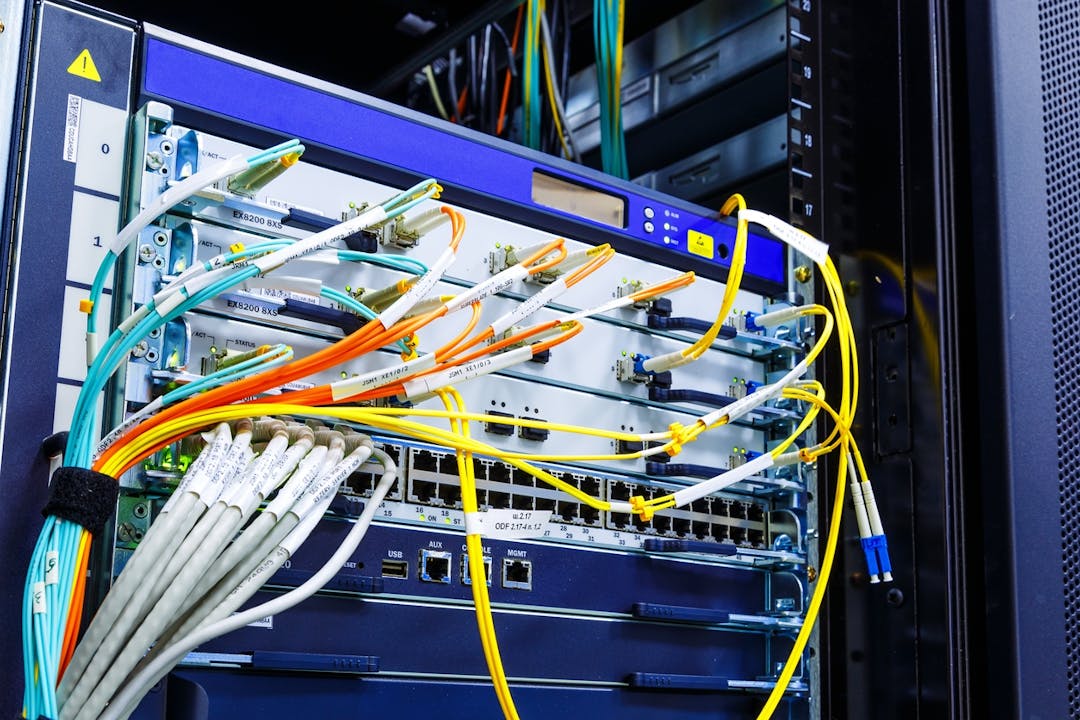What is data center cabling?
The connectivity provided by good cable management is the foundation of every data center — enabling the transactions that help businesses make mission-critical decisions every day. All data centers have various cabling types, ranging from all-copper installation to all-fiber installation and everything in between (depending on your equipment and requirements). Whether the cables in question are for power or data, failure to properly manage this part of data center infrastructure can cause serious issues, from increased operating costs to more expensive outages. Cable management cannot be an afterthought.
Data center cabling usually fall into one of two setup disciplines:
Structured cabling
Uses predefined standards based on design with preset connection points and pathways. Specifically structured cabling enforces a cabling design based on the bandwidth requirements of the system.
After testing to ensure good performance, the cables will then get organized and labeled.
- Pros: Longer lifespan compared with an unstructured approach, lower long run operational costs.
- Cons: Longer install process, initial higher costs.
Unstructured cabling (Point to point cabling systems)
Does not utilize predefined standards, connection points, or pathways. Because of airflow restrictions, this cabling system might lead to cooling issues and higher energy costs. Given that unstructured cabling does not use preset plans or designs, managing system growth will be more challenging since there is no guide to guide changes in cable locations or run new cabling.
- Pros: Not much other than it may take less time to install and pose fewer initial costs.
- Cons: Ultimately, unstructured cabling will end in higher operational costs and a shorter system lifespan.
How to master installation
- Standards Guide: ANSI/TIA-942-B-2017 Telecommunications Infrastructure Standard for Data Centers
- Standards Guide: BICSI 002-2019 Data Center Design Implementation & Best Practices
- Testing and Certification: To ensure that the infrastructure is working and will support your bandwidth and system needs.
- Documentation: To record the types of cables used and the locations and connections of each cable to ease future troubleshooting or maintenance.
- Measure: To ensure that the cables are of proper length. This measurement prevents unforeseen downtime to critical IT equipment caused by loose wires getting tangled or disconnected.
- Growth plan: Make sure your system is appropriate for the foreseeable future. Ensure that racks and cable trays get ergonomically designed to accommodate anticipated growth.
How to master organization
- Run cables to the sides of server racks to ease adding or removing servers from the shelf.
- Bundle cables together to conveniently connect the next piece of hardware down to the floor in data centers with elevated floors or up to the ceiling in data centers with wires that run through the ceiling.
- Plan in advance for installing additional hardware. Disorganized cabling can interfere with air circulation and cooling patterns. Planning prevents damages due to quickly rising temperatures caused by restricted air movement.
- Label cables securely on each end. This labeling process enables you to conveniently locate cables for testing or repair, install new equipment, or remove extra cables after equipment has been moved or upgraded, which saves time and money.
- Color code cables for quick identification. Choose a color scheme that works for you and your team. It may be wise to put up a legend signifying the meaning of the colors of each cable. You may also color-code the cable’s destination, especially for larger installations across floors or offices.
For over two decades ProLabs has provided data center operators around the world with high quality transceivers and cabling solutions. ProLabs can support your data center needs with the widest range of MSA compliant, compatible optical transceivers, DACs, and AOCs.
